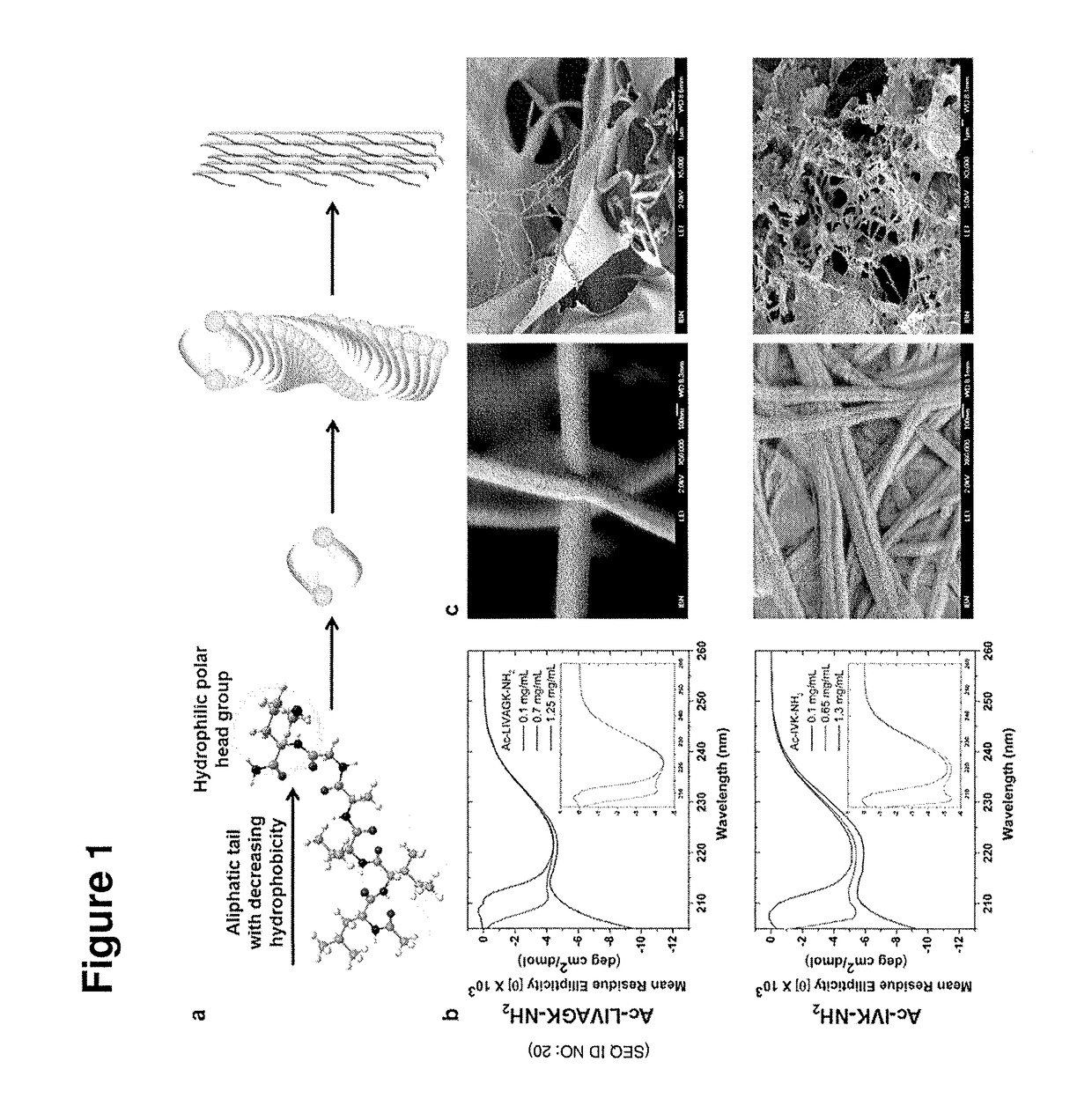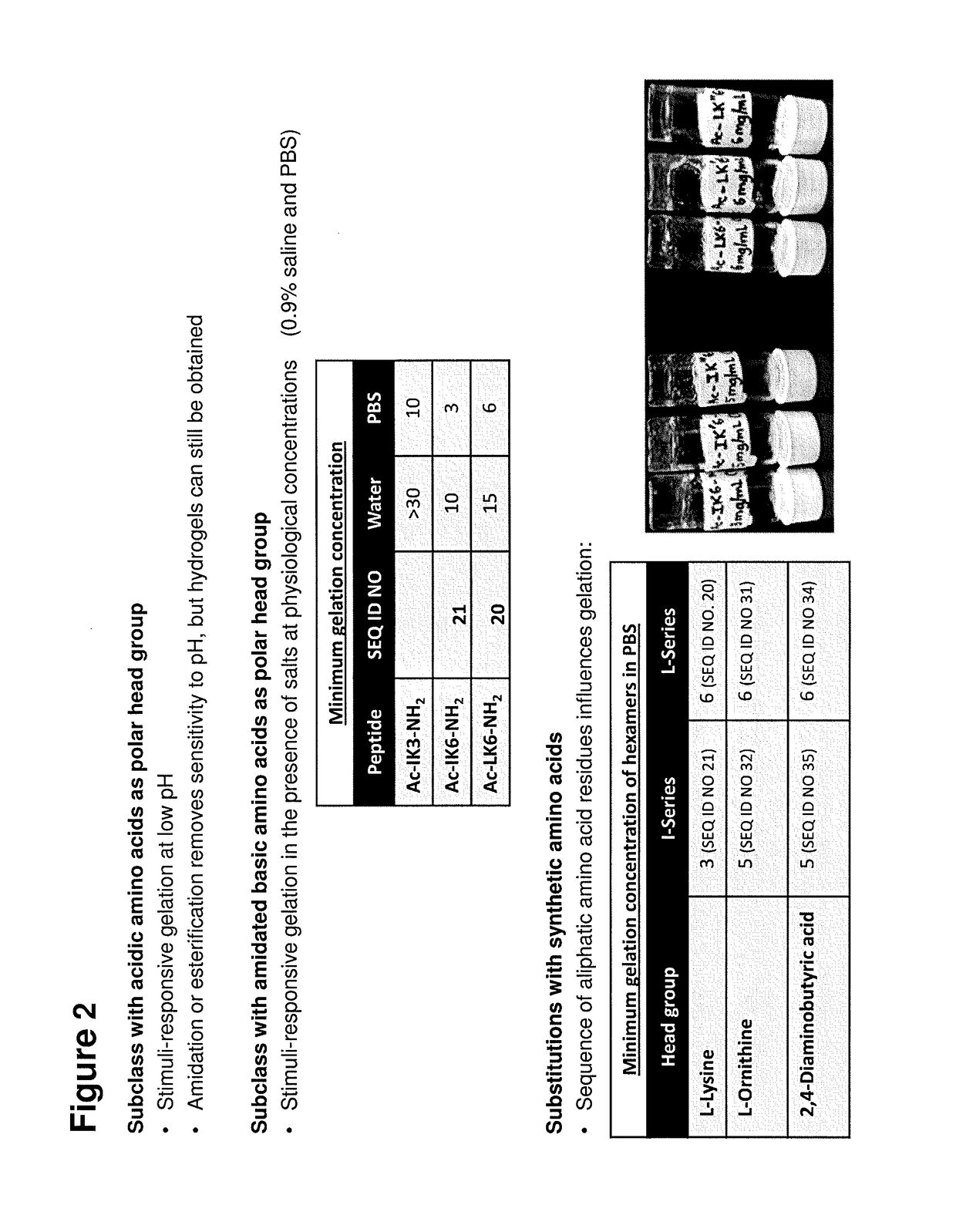Self-assembling peptides, peptidomimetics and peptidic conjugates as building blocks for biofabrication and printing
a technology of peptides and peptides, which is applied in the direction of peptide sources, human health protection, prosthesis, etc., can solve the problems of high production cost and insufficient biomaterials to mimic the biological effect, and achieve the effect of facilitating the integration of scaffolds
- Summary
- Abstract
- Description
- Claims
- Application Information
AI Technical Summary
Benefits of technology
Problems solved by technology
Method used
Image
Examples
examples
[0465]Experiments have been performed to illustrate the technical aspects of exemplary embodiments of the present invention. The following examples are described in the Experimental Methods and Results. The skilled artisan will readily recognize that the examples are intended to be illustrative and are not intended to limit the scope of the present invention.
Experimental Methods and Results
Peptides
[0466]The peptide sequences were designed to represent an amphiphilic peptide structure containing a hydrophilic head group and a hydrophobic tail. The rationale for the peptides design was to create a peptide monomer of decreasing size resembling a cone shaped structure. The hydrophobic tail differs by using different aliphatic amino acids. It is consisting of the following aliphatic amino acids such as glycine, alanine, valine, leucine and isoleucine and the hydrophilic head group is consisting of one or two polar or charged amino acids. The sequence order of the hydrophobic tail differe...
example 2
2.1 Methods
[0519]Materials. All peptides used in this study were manually synthesized by American Peptide Company (Sunnyvale, Calif.) using solid phase peptide synthesis and purified to >95% via HPLC. Amino acid and peptide content analysis were performed. All cell culture reagents were purchased from Invitrogen (Carlsbad, Calif.).
[0520]Preparation of hydrogels. To prepare the peptide hydrogels, the lyophilized peptide powders were first dissolved in cold milliQ water and mixed by vortexing for 30 seconds to obtain a homogenous solution. 10% volume of 9% sodium chloride or 10-times phosphate-buffered saline was subsequently added and the resultant solution vortexed for another 30 seconds to evaluate gelation. The gelation occurred between minutes to overnight, depending on the peptide concentration and buffer used. Gelation can be facilitated by sonication or heating.
[0521]Circular dichroism spectroscopy. CD spectra were collected with an Aviv 410 CD spectrophotometer fitted with a ...
PUM
| Property | Measurement | Unit |
|---|---|---|
| pH | aaaaa | aaaaa |
| pH | aaaaa | aaaaa |
| pH | aaaaa | aaaaa |
Abstract
Description
Claims
Application Information
 Login to View More
Login to View More - R&D
- Intellectual Property
- Life Sciences
- Materials
- Tech Scout
- Unparalleled Data Quality
- Higher Quality Content
- 60% Fewer Hallucinations
Browse by: Latest US Patents, China's latest patents, Technical Efficacy Thesaurus, Application Domain, Technology Topic, Popular Technical Reports.
© 2025 PatSnap. All rights reserved.Legal|Privacy policy|Modern Slavery Act Transparency Statement|Sitemap|About US| Contact US: help@patsnap.com



